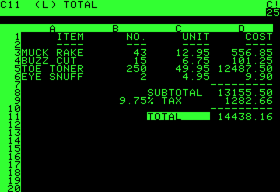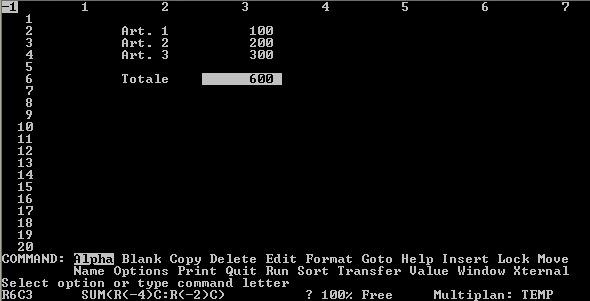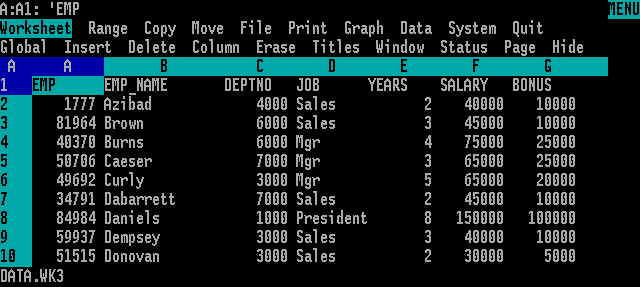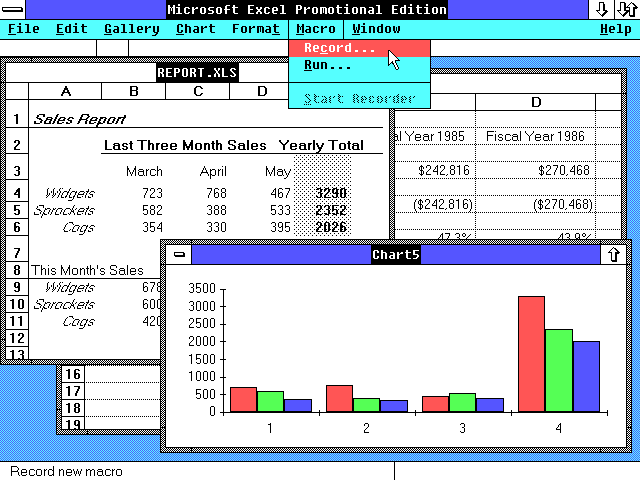Since the very first spreadsheet called VisiCalc was released, a lot has changed in the world of spreadsheets.
Below, you will find some important dates, so you can see how spreadsheets evolved since that time.
1979
The first electronic spreadsheet called VisiCalc was released on Apple II computers. It was called a killer application (commonly shortened to a killer app). The killer app is an application that is so necessary or desirable that consumers would buy the hardware just to run that application. VisiCalc is often considered the application that turned the microcomputer from a hobby for computer enthusiasts into a serious business tool.
It was limited to 255 rows and 63 columns.

1982
Microsoft created the Multiplan spreadsheet, which became a competition for VisiCalc.

1983
This was the year when a new competitor was introduced by Lotus Development Corporation. It’s called Lotus 1-2-3 and was improved greatly when compared to its predecessors. In this spreadsheet, you can add up to 8192 rows and 256 columns. It’s an increase of 13000% compared to VisiCalc. Lotus became the most popular spreadsheet on the market, winning the competition with Multiplan.

1985
The first Excel (Excel 1.0) was introduced to the Macintosh computer.
1987
Excel 2.0 was the first Excel that was available on PC. It offered 16 384 rows and 256 columns. It was twice as many cells, compared to the previous version.

1990
Excel 3.0 was introduced in 1990. In this version, a few new features were added; For example, a toolbar, the ability to draw, plug-ins, and 3-D charts.
1992
This year, Excel 4.0 was introduced.
1993
Excel 5.0 was introduced in 1995. It had some new important features; One of them is VBA language (Visual Basic for Application) that allows you to automate tasks in Excel.
1995
In 1995, Windows 95 was also introduced Excel 95.
1997
In 1997, Microsoft introduced Excel Office Assistant. The main task of the assistant was to suggest good ideas and solutions to problems with which you were dealing. In fact, many Excel users complained that it was too irritating. It resulted in Microsoft changing the policy regarding this tool.
2000
This year, Excel 2000 was introduced. Excel Office Assistant was still present, but it was much less intrusive than in the previous version of Excel.
2003
The new Excel 2003 had better support for XML files.
2007
There are much more improvements in Excel 2007 than in the previous versions. One of them is the new interface, in which the main role is played by Ribbon. The ribbon was created, so you could access different options more easily and intuitively.
2010
Microsoft introduced Excel 2010 with the ability to support 64-bit systems.
2013
Excel 2013 had a new „flat” metro-style interface, improved memory management, and a few extra features.
2016:
Excel 2016 introduced features like Power Query (data import and transformation) and Get & Transform (data shaping and cleansing).
2019:
Excel 2019 witnessed the integration of features like real-time data analysis with Excel Live and enhanced accessibility features.
2021:
Excel 2021 (part of Microsoft 365) continues to receive regular updates with new features like XLOOKUP (advanced search function), dynamic arrays (automatic spill functionality), and improved collaboration tools.
